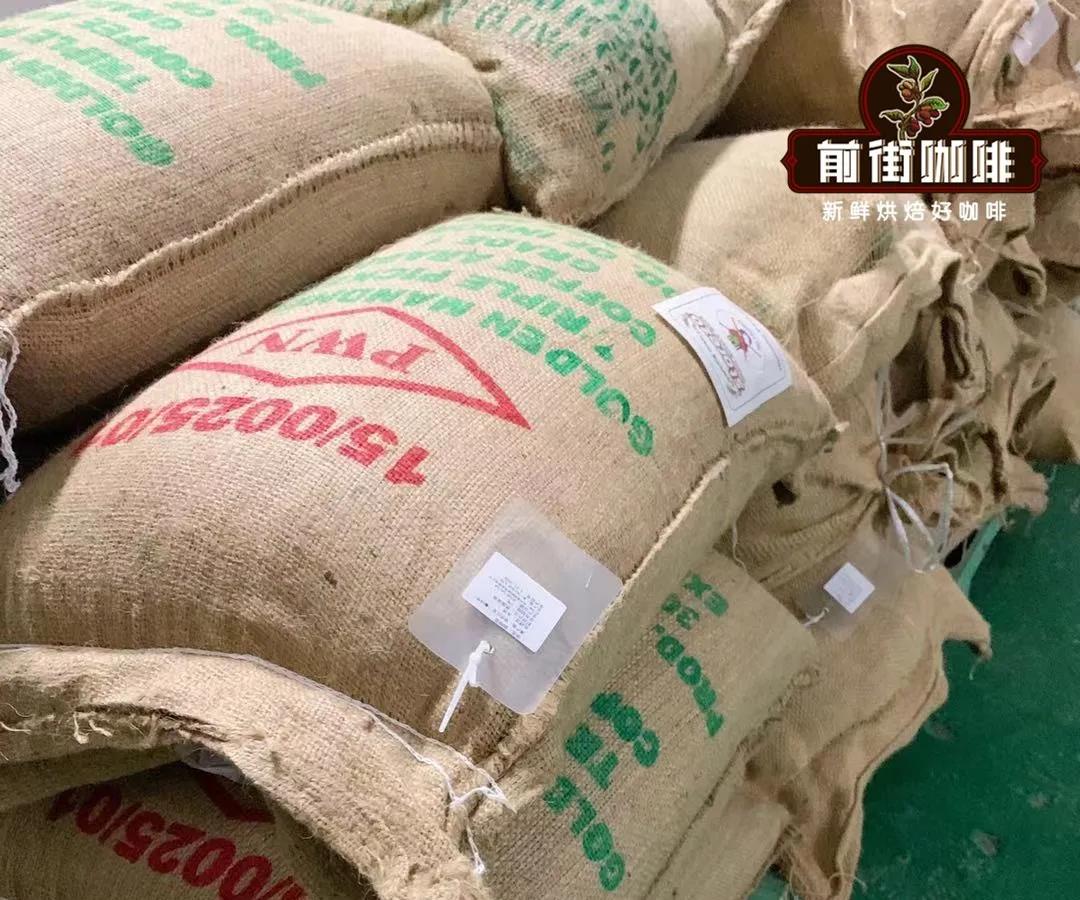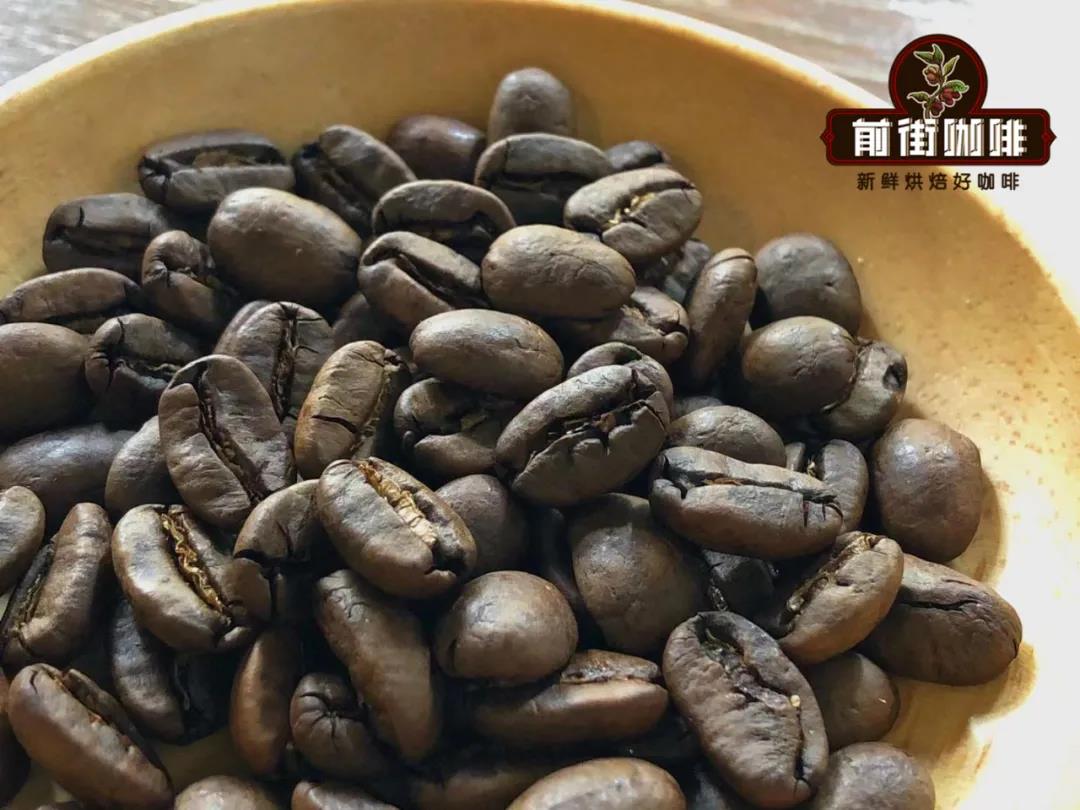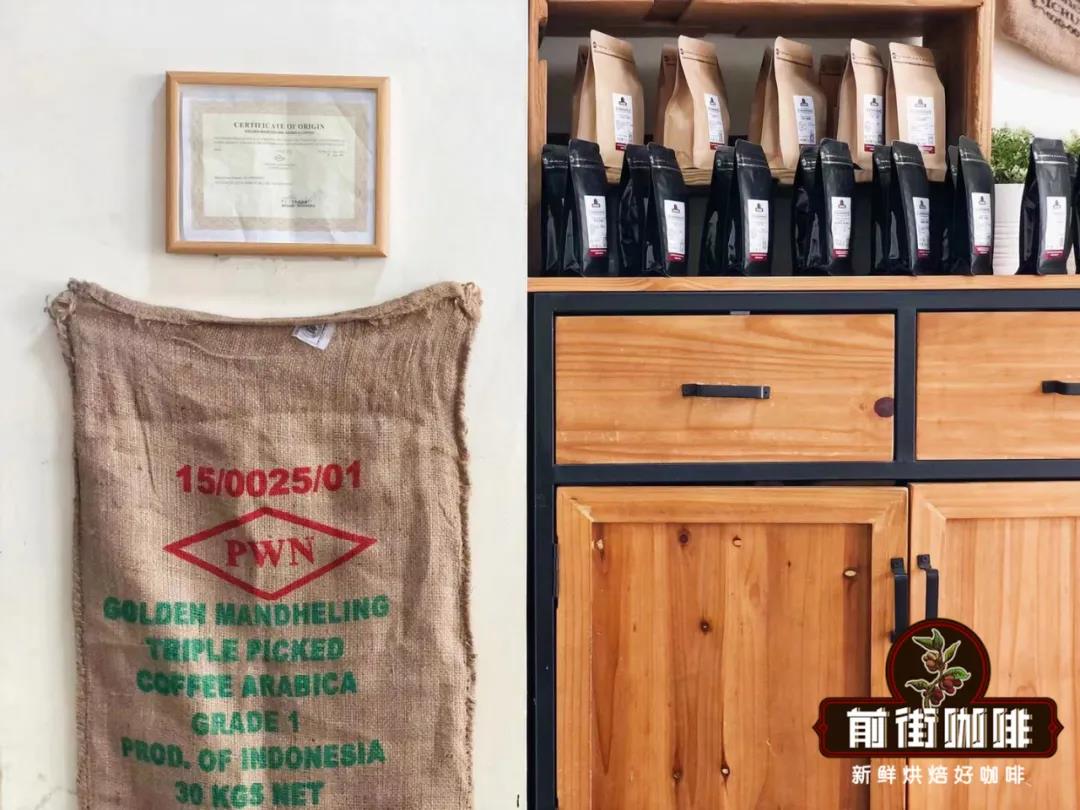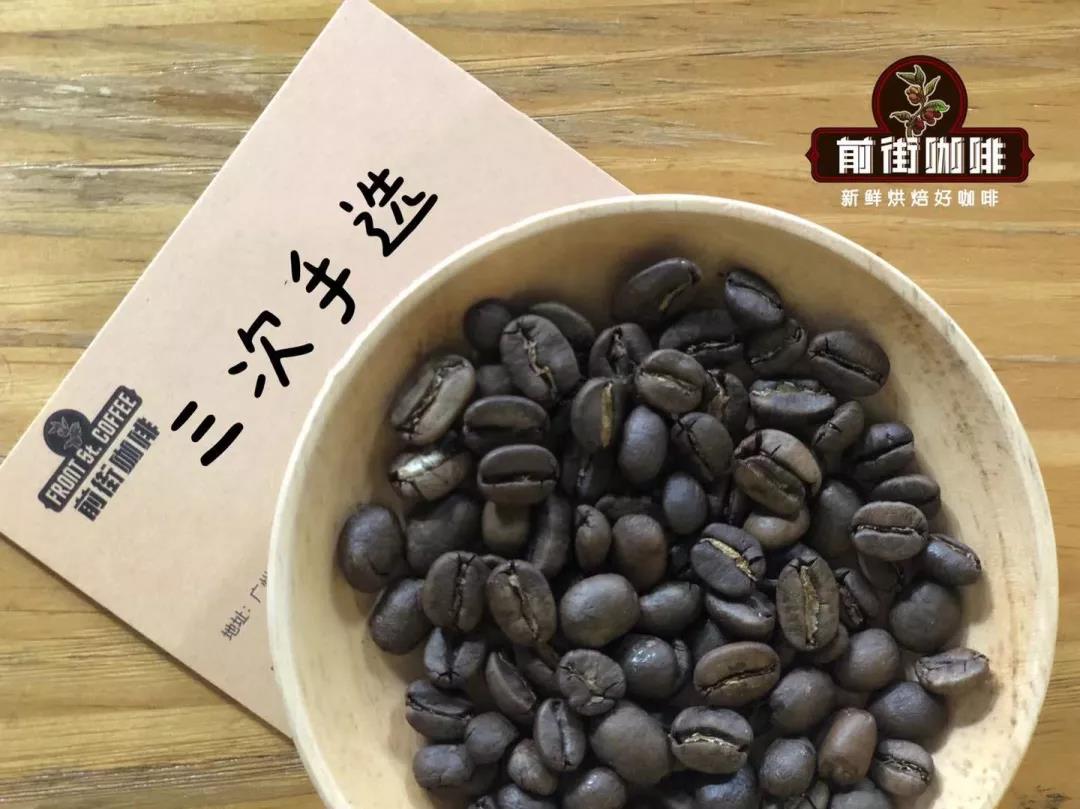Why do coffee beans produce oil? PWN gold Mantenin coffee beans are oiled because they are roasted in medium depth.
Professional coffee knowledge exchange more coffee bean information please follow the coffee workshop (Wechat official account cafe_style)
Recently, a three-time hand-selected mantenin coffee bean (also known as golden mantenin by coffee merchants) was launched in the Jiayu mountain area of Sumatra, Indonesia. Many friends asked what was the difference between this golden mantenin coffee bean in front of the street and the PWN gold mantenin coffee bean in front of the street. In response to this question, Qianjie immediately made a series of comparisons between this gold manning and PWN gold mantenin coffee beans.
What is PWN Gold Manning?
PWN is an acronym for Pwani Coffee Company, a famous Indonesian raw bean manufacturer, and "Golden Manning" has long been registered as a trademark by PWN, and the word "Golden Manning" has become the exclusive property of PWN. The "Gold Top Mandheling" registered by Japanese companies we have seen in the market and the three preferred mantenins we mentioned below are not gold mantenin coffee beans in the real sense, even if they are similar in flavor.

PWN Gold Manning's strict screening system
PWM gold manning coffee beans are grown in Lake Tawa in the Geo Mountains in northwestern Sumatra. The specification standard of Golden Manning is more than 18 mesh, and there are less than 3 defective beans (300g raw bean samples). It belongs to the highest grade G1, dark green and neat flat beans.

We all know that the raw coffee beans in Indonesia are treated with wet planing, because the semi-hard and semi-soft wet raw beans are easily crushed when the pectin sheepskin is removed, and the beans are crushed like sheep's hoof-shaped, commonly known as sheep's hoof beans, although these sheep's foot beans are not defective beans, but in the view of PWN, these sheep's foot beans do not look so handsome, so they should be screened out in order to give everyone a sense of neatness.

You may think that there are more than 18 items of coffee beans and no more than 3 defective beans in 300g coffee raw beans, and the selection of Bauhinia beans is already very strict, but PWN can also be more stringent, that is, after three manual screening, it is uniformly put into the machine to do density color separation screening, and finally presents Mantenin coffee beans with uniform color and uniform bean shape. It is said that when dealing with raw beans, the sunlit mantenin gives off a golden luster, so it is named golden manning.

After strict screening of Golden Mantenin, Qianjie Coffee not only does not have the unique soil flavor of ordinary Mantenin, but also gives people a clean and bright taste while drinking mellow.
How to tell the real PWN gold Manning?
Two key points: the certification provided by PWN and the clear PWN logo on the raw bean sack of PWN gold Mantenin. If you're not sure if what you bought is an authentic PWN Manning, ask the seller to provide a certificate or a coffee sack.

Why is the three-time hand-selected Jiayu Mantenin also known as Golden Manning?
The three-time hand-selected Mantenin, which is compared in front of the street, comes from the producing area of Mount Acjiayo, because it has reached the highest grade G1 after three strict manual screening, so in order to have a market, the market will name the three-time hand-selected Mantenin Gold Manning to attract the attention of the public. In fact, through the cup test on the front street, it is still lack of cleanliness compared with PWN gold Manning, which is also related to the different coffee varieties of the two beans.

PWN Gold Manning and three hand-selected Mantenin Coffee varieties
Mantenin was hand-selected three times using the most common TimTim variety in Indonesia, that is, the Timor variety. Timor is a hybrid of Arabica and Robusta. Although it is more refined than Robusta in flavor, it still retains a lot of Robusta's mellow coffee flavor, which naturally lacks cleanliness. PWN Gold Manning uses the Ateng variety, which is another hybrid of Timor and Arabica, and its flavor will naturally be cleaner than that of Timor.
How to bake two types of Manning coffee beans in front of the street?
PWN gold Mantening front street baking record: Yangjia 800N, the amount of beans 480g. Put the furnace temperature to 200 degrees Celsius, adjust the firepower to 160 degrees after opening the throttle for 1 minute, bake to 5 degrees Celsius 39 degrees 40 ", the temperature is 148 degrees, the bean surface turns yellow, the smell of grass disappears completely, dehydration is completed, the firepower is adjusted to 140 degrees, and the throttle is changed to 4 degrees. In the 9th & # 39th "minutes, ugly wrinkles and black markings appear on the bean surface, and the smell of toast obviously changes to the smell of coffee, which can be defined as a prelude to an explosion. At this time, listen clearly to the sound of the explosion point, and start to explode at 9 degrees 39: 54". Turn the firepower down to 60 degrees, open the throttle 5, and put the pot at 204.5 degrees.

Jiayu Mantenin Qianjie coffee roasting record: Yangjia 800N, bean dosage 480g. Temperature to 200 degrees Celsius into the pot, throttle opened for 1 minute, adjust firepower 160 degrees, throttle unchanged, bake to 5 degrees Celsius 39 degrees 18 ", temperature 148 degrees, bean surface turns yellow, grass smell disappears completely, dehydration is completed, firepower is adjusted to 140 degrees, throttle changes 4. 8th & # 39th 00 "time, ugly wrinkles and black markings appear on the bean surface, and the smell of toast obviously turns to coffee, which can be defined as a prelude to an explosion. At this time, listen clearly to the sound of a burst point, start to explode at 9 degrees 39", reduce the firepower to 80 degrees, open the throttle 5, and put the pot at 202 degrees.
When baking two types of Mantenin coffee beans in Qianjie, medium-deep roasting is used to highlight the mellow coffee flavor of the Mantenin coffee beans. The middle and deep baking is generally close to the second explosion point. according to the difference of the roaster, the first explosion occurs at the baking temperature of about 180 min 205 °C and the second explosion occurs at 205 °C-230 °C.
The oil from coffee beans is commercial coffee beans?
Some time before the street, I heard this comment of PWN Gold Manning: "these beans are out of oil, so they are commercial coffee beans." The commercial beans mentioned here are not coffee beans of high quality, with low quality and high defect rate. In terms of price, fine coffee beans are several times more expensive than commercial beans. Most of the low-quality coffee beans use deep roasting to reduce the bad coffee flavor of commercial beans. In general, the roasting degree of deep-roasted coffee beans has reached nearly two explosions after the first explosion. The deeper the roasting degree, the more carbon dioxide will be produced in the coffee beans.

What is the reason why coffee beans come out of oil?
The release of oil from coffee beans is closely related to the release of carbon dioxide. Deep-baked beans show a slight glossy finish after baking, and then begin to "oil" on the surface from the second day to the fifth day after baking, this is because the lipids contained in the coffee beans themselves are roasted for a long time, the water and oil imbalance produced by high dehydration rate, and then a large amount of carbon dioxide is released after baking, resulting in oil phenomenon. Therefore, if deep-baked beans are oiled on the surface during storage, it is a normal phenomenon. This also shows that the biggest cause of oil production is the baking degree of coffee beans rather than the quality of coffee beans, of course, the amount of oil produced by coffee beans will be related to the variety of coffee, such as robusta coffee beans will have more lipids than Arabica.
Comparison of coffee cups in front street
When it comes to the flavor performance of the two coffee beans, the biggest difference has been mentioned when it comes to coffee varieties: cleanliness. PWN gold mantenin gives you a mellow back acid with low acidity and high cleanliness, while three hand-selected Jiayushan mantenin gives you a high alcohol thickness, but not enough cleanliness, and the acidity will be slightly higher than PWN gold mantenin.
Experience of brewing coffee in Qianjie
This cooking highlights the two gold manning mellow, clean, fragrant characteristics, using KONO Mingmen filter cup for cooking. The guide groove of the "ribs" of the KONO filter cup extends to the bottom of the hole where the coffee liquid flows out, because the ribs are at the bottom and are short, and the filter paper fits well, so the flow rate is slower than the V60, which is suitable for brewing coffee that wants to express the thickness of alcohol. The degree of grinding is medium and rough grinding (73% of 0.85mm standard sieve), the amount of powder is 15g, the ratio of powder to water is 1:15, and the water temperature is 89 °C.

After wetting the filter paper, pour the ground coffee powder into the bed, the amount of coffee powder is 15 grams, the first stage is steamed with 30 grams of hot water of 89 degrees Celsius, the steaming time is 30 seconds, after steaming, the total water is injected into the second stage, the total water is 125g, take the way of water injection gently around the circle to avoid the collapse of the powder bed, let the water filter and extract slowly after water injection, and inject the last section when the liquid level drops to 1/3, the total water is 225g. The injection is completed in about 1 minute and 32 seconds, and the extraction removes the filter cup in about 2 minutes.

PWN Golden Manning Flavor description: sweet herbs, cinnamon spices, orange pomelo peel aromas, mellow sweetness, creamy walnut chocolate. The fruit acid is introverted and soft, with a strong melon fragrance in the aroma, the herb fragrance decreases with the temperature, with a hint of spice, the herb flavor is mellow and full of sweetness.
Three times hand-selected Jiayu Mantenin flavor description: spice herbal flavor, soft acidity, cocoa, nut finish, obvious sweetness, mellow thickness.
For more boutique coffee beans, please add private Qianjie coffee on Wechat. WeChat account: kaixinguoguo0925
Important Notice :
前街咖啡 FrontStreet Coffee has moved to new addredd:
FrontStreet Coffee Address: 315,Donghua East Road,GuangZhou
Tel:020 38364473
- Prev
Is the bidding batch of coffee beans the same as the same batch? Ethiopia extraordinary Cup Competition with the same batch of coffee beans
Professional coffee knowledge exchange more coffee bean information please follow the coffee workshop (Wechat official account cafe_style) more boutique coffee beans please add private Wechat Qianjie Coffee, WeChat: kaixinguoguo0925 Qianjie Coffee auctioned for 22nd place in the Ethiopian COE Cup in 2020, sun iron pickup coffee beans from Arsi producing area (COE22 transmission)
- Next
How to choose the characteristics of Manning coffee beans? Is Manning a coffee breed? Description of flavor and taste of coffee producing area in Lindong, Indonesia
Professional coffee knowledge exchange more coffee bean information please follow the coffee workshop (Wechat official account cafe_style) the current situation of Indonesian coffee market NEWS! According to the Coffee Finance Network, Indonesian coffee beans are almost exported in the October season, and there is little stock of coffee available locally, so the coffee market
Related
- Beginners will see the "Coffee pull flower" guide!
- What is the difference between ice blog purified milk and ordinary milk coffee?
- Why is the Philippines the largest producer of crops in Liberia?
- For coffee extraction, should the fine powder be retained?
- How does extracted espresso fill pressed powder? How much strength does it take to press the powder?
- How to make jasmine cold extract coffee? Is the jasmine + latte good?
- Will this little toy really make the coffee taste better? How does Lily Drip affect coffee extraction?
- Will the action of slapping the filter cup also affect coffee extraction?
- What's the difference between powder-to-water ratio and powder-to-liquid ratio?
- What is the Ethiopian local species? What does it have to do with Heirloom native species?

